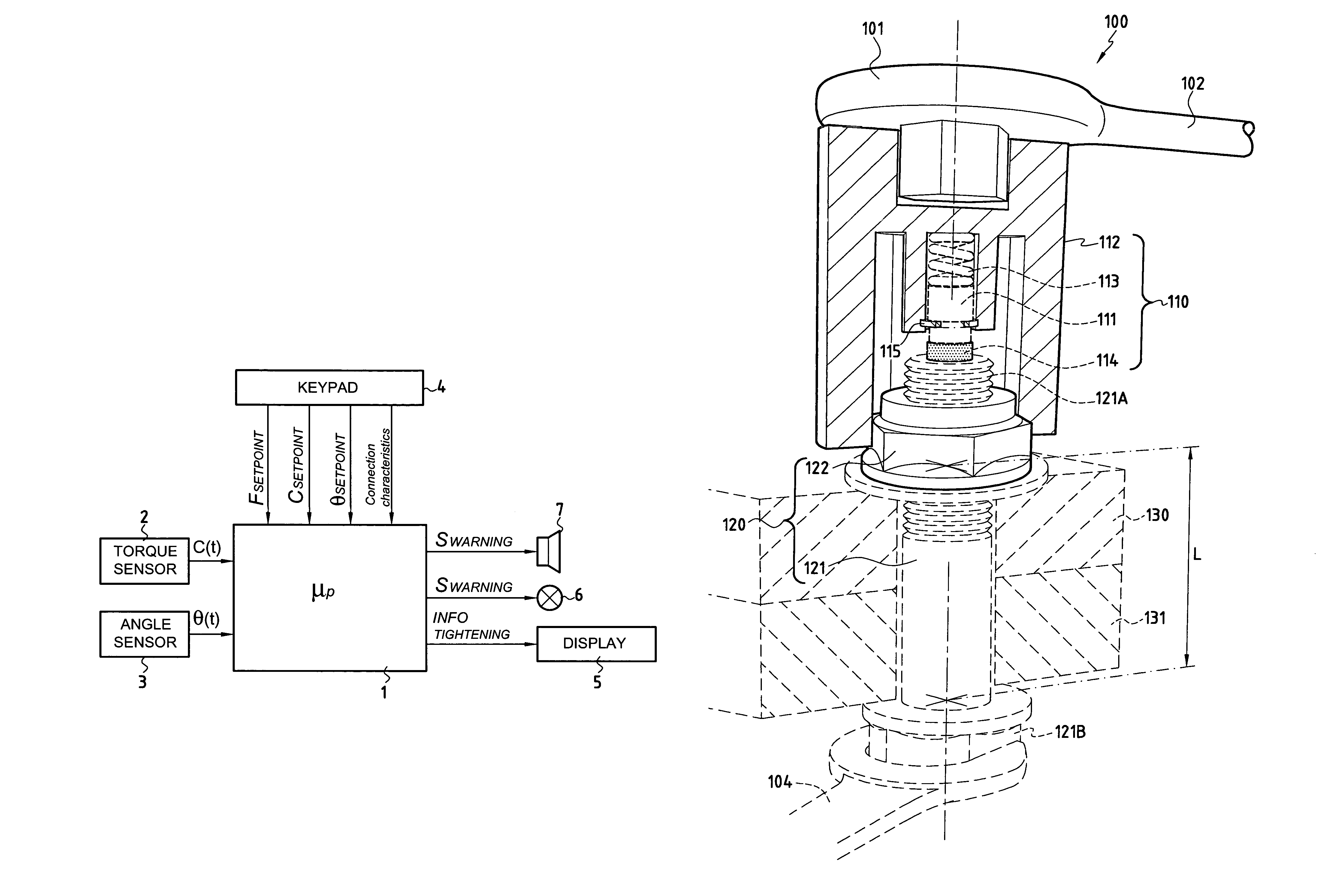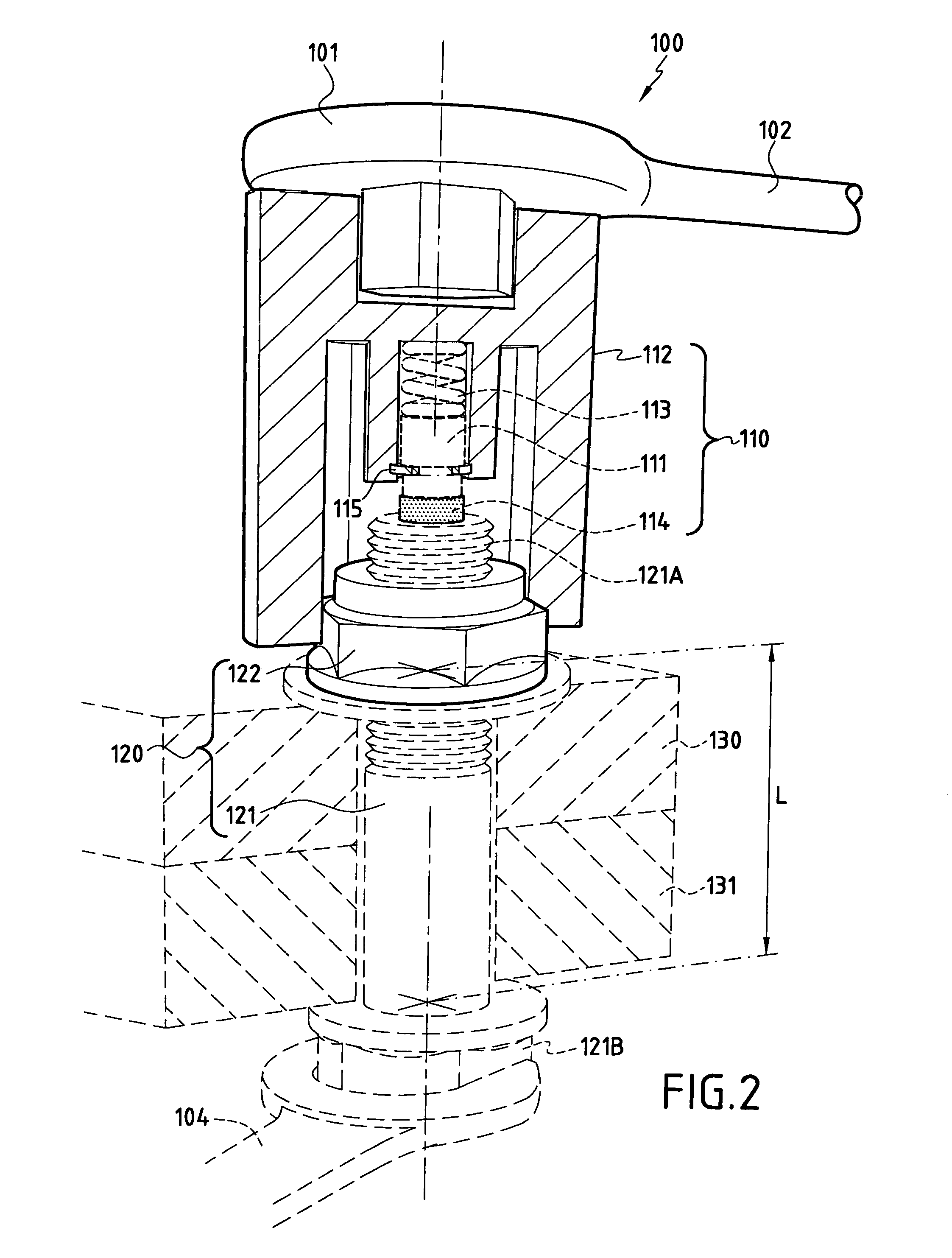Wrench with controlled tightening
a wrench and control technology, applied in the field of manual wrenches, can solve the problems of affecting the integrity of the connection, affecting the ability of the screw fastener to be restarted, and the force on the screw fastener is variable, so as to avoid overdimensioning the screw fastener connection
- Summary
- Abstract
- Description
- Claims
- Application Information
AI Technical Summary
Benefits of technology
Problems solved by technology
Method used
Image
Examples
Embodiment Construction
[0029]The method of controlling tightening implemented by the wrench of the present invention requires two types of measurement, measurement of the applied tightening torque and measurement of the tightening angle of rotation.
[0030]Torque is measured in conventional manner as in most commercially available torque wrenches, i.e. by measuring extension using signals from strain gauges.
[0031]Angle of rotation is measured electrically or electronically by using two concentric cylindrical surfaces of the connection. The measuring device used must generate a low coefficient of friction between the moving parts so as to avoid significantly disturbing the tightening torque taken into account for calculation purposes. Such a device may be constituted, for example, by a ball system or by tubes or bars made of materials having low coefficients of friction, such as Teflon®. This type of device for measuring angle of rotation is described in greater detail below in the present description.
[0032]...
PUM
 Login to View More
Login to View More Abstract
Description
Claims
Application Information
 Login to View More
Login to View More - R&D
- Intellectual Property
- Life Sciences
- Materials
- Tech Scout
- Unparalleled Data Quality
- Higher Quality Content
- 60% Fewer Hallucinations
Browse by: Latest US Patents, China's latest patents, Technical Efficacy Thesaurus, Application Domain, Technology Topic, Popular Technical Reports.
© 2025 PatSnap. All rights reserved.Legal|Privacy policy|Modern Slavery Act Transparency Statement|Sitemap|About US| Contact US: help@patsnap.com



